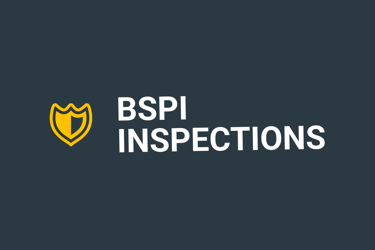Brisbane New Home Build Timeline & Market Climate Guide 2024–2025 Estimates
Discover how long it takes to build a house in Brisbane—from 12–14 months of planning to 6–18 months of on‑site work—why 2024–2025 timelines are stretching, and how stage inspections keep you on track.
5/8/20243 min read


Brisbane New Home Build Timeline & Current Building Climate (2024–2025)
Building a home in Brisbane isn’t just about hiring a builder—it’s a multi‑year journey full of hidden pitfalls. Knowing when and why to book an independent stage inspection can save weeks of re‑work and keep your budget intact.
1. The Full Journey: Planning + Construction
Pre‑Construction (Design, Planning & Approvals): 12–14 months
Think of this as the “blueprint inspection” stage—checking your plans early can head off costly design revisions later.
On‑Site Build:
Standard homes: 6–12 months (slab → handover)
Custom/High‑End homes: 10–16 months (up to 18 months)
At each major milestone (slab, frame, lock‑up, fix‑out), a quick independent check ensures work is square and compliant before trades move on.
Overall Total: ~18–32 months from concept to keys
Pro Tip: Block out inspection slots in your calendar now—early checks mean fewer surprises at handover.
2. Why Timelines Are Stretching in 2024–2025
Booming Demand & Trade Shortages
Major events (2032 Olympics, Cross River Rail) are soaking up bricklayers and carpenters. An inspection at the frame stage can flag rushed work before you lose your leverage.
Material Cost Hikes & Delays
When concrete or insulation takes 4–6 weeks longer to arrive, an interim check keeps you ahead of the schedule slip.
Slow Council & Permit Processes
While you wait on DA or BA, you can use that down‑time to book your next inspection—no need to sit idle.
Financing & Market Trends
As valuations and budgets shift with interest rates, an up‑to‑date inspection report becomes crucial proof for lenders if you need to refinance mid‑build.
Industry Instability & Productivity Gaps
With hundreds of subcontractor insolvencies, an early stage inspection can identify if your builder’s chosen subbie is delivering shoddy work under cost pressure.
Insider Hint: A well‑timed inspection report can be your strongest bargaining chip if you need a builder to fix defects before progress payments.
On‑Site Total: 6–18 months
Overall Journey: ~18–32 months
4. Stay On Track with Stage Inspections
An independent inspection at each build stage:
Design Phase: Confirms your plans match site conditions
Slab Stage: Checks levels, reinforcement and drainage before concreting
Frame Stage: Flags structural or framing errors early
Lock‑Up Stage: Verifies weatherproofing, windows and roof install
Fix‑Out Stage: Reviews tiling, cabinetry, paint and final fittings
Practical Completion: Captures every defect so they’re rectified before handover
Free Download: Our Stage Inspection Checklist & Timeline PDF walks you through the exact items to check at each stage—so you never miss a hidden defect that could blow your budget or delay your move‑in.
Building a home in Brisbane isn’t just about hiring a builder—it’s a multi‑year journey full of hidden pitfalls. Knowing when and why to book an independent stage inspection can save weeks of re‑work and keep your budget intact.
1. The Full Journey: Planning + Construction
Pre‑Construction (Design, Planning & Approvals): 12–14 months
Early “blueprint inspections” catch design issues before they cost thousands to fix.
On‑Site Build:
Standard homes: 6–12 months (slab → handover)
Custom/High‑End homes: 10–16 months (up to 18 months)
Independent checks at slab, frame, lock‑up and fix‑out stages prevent small errors from snowballing.
Overall Total: ~18–32 months from concept to keys
Pro Tip: Block out inspection slots in your calendar now—early checks mean fewer surprises at handover.
2. Why Timelines Are Stretching in 2024–2025
Booming Demand & Trade Shortages
Major events (2032 Olympics, Cross River Rail) are soaking up bricklayers and carpenters. A frame‑stage inspection can flag rushed work before it’s buried.
Material Cost Hikes & Delays
Concrete, steel and insulation prices jumped 20–25% this year. Interim checks keep you ahead if materials arrive late.
Slow Council & Permit Processes
DAs, BAs and plumbing permits each add 2–4 months. While you wait, schedule your next inspection slot.
Financing & Market Trends
Interest rate cuts in 2025 will boost borrowing—but more buyers will compete for the same limited trades.
Industry Instability & Productivity Gaps
~3,000 construction insolvencies in 2024 risk subcontractor gaps. Early inspections give you leverage to insist on fixes.
Insider Hint: A detailed inspection report can be your strongest bargaining chip if you need your builder to correct defects before progress payments.
3. Phase‑By‑Phase On‑Site Breakdown
Site Prep & Slab (1–3 months)
Delay factors: Groundwork, weather
Inspection benefit: Verify soil compaction and slab levels early to avoid major re‑pour costs.
Frame to Lock‑Up (1–2 months)
Delay factors: Carpenter availability, rain
Inspection benefit: Catch mis‑aligned studs or poor bracing before lock‑up closes out.
Fix‑Out (Finishes) (2–4 months)
Delay factors: Trade scheduling, material shortages
Inspection benefit: Ensure correct waterproofing, tiling and cabinetry installation.
Practical Completion & Handover (1–2 months)
Delay factors: Snagging, cleanup, final inspections
Inspection benefit: A final snag inspection saves you from chasing dozens of small fixes after handover.
On‑Site Total: 6–18 months
Overall Journey: ~18–32 months
4. Stay On Track with Stage Inspections
An independent inspection at each build stage helps you:
Catch defects early
Verify materials & workmanship
Avoid costly snags at handover


